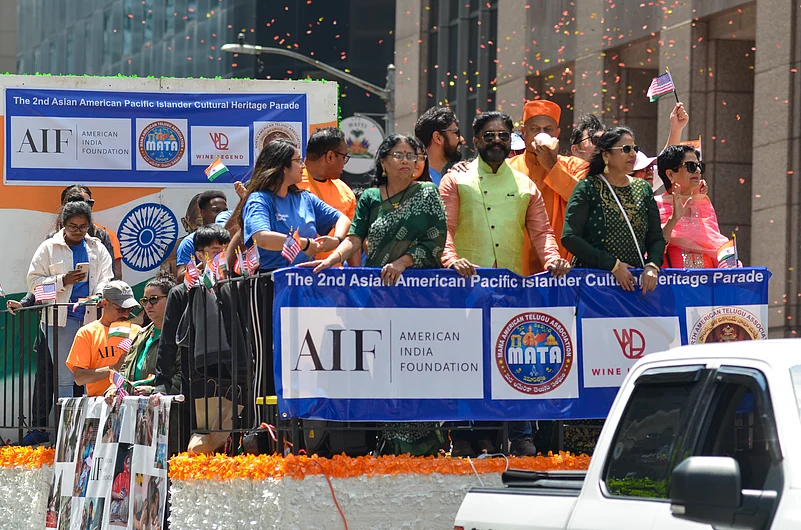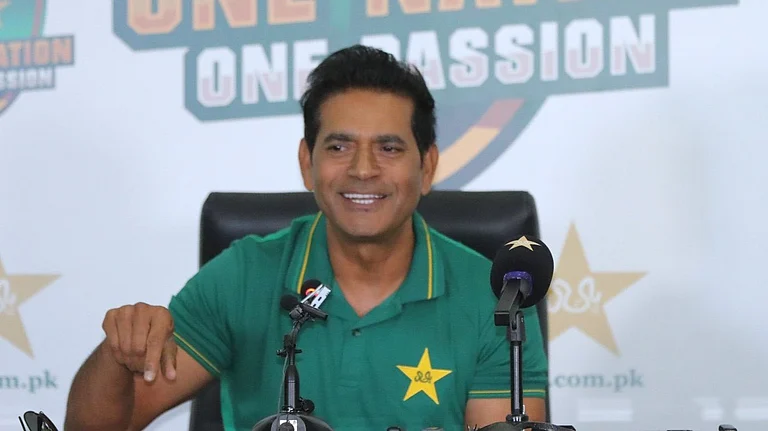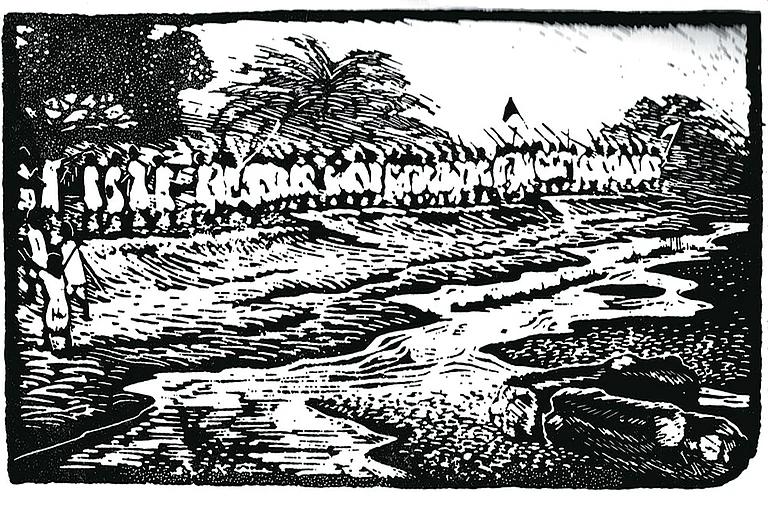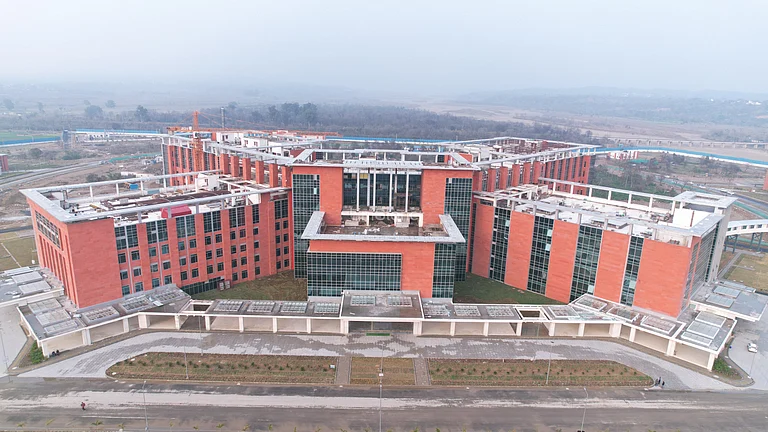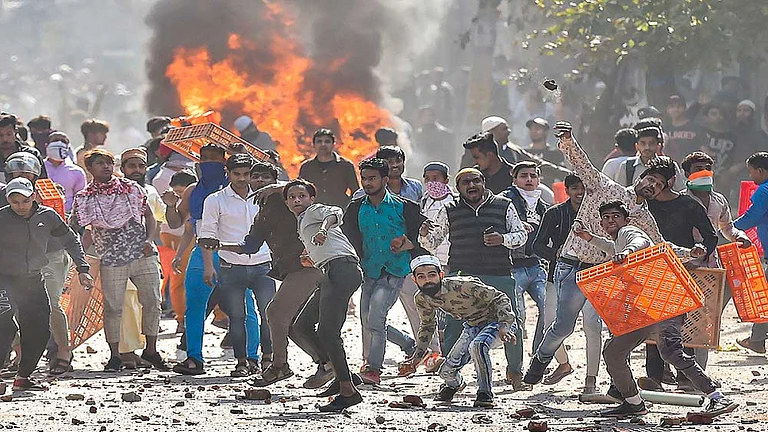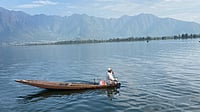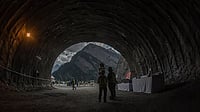
Indian-American successes coexist with persistent racial stereotyping.
The diaspora is increasingly divided by religion, caste and ideology.
Cultural biases from India hinder deeper integration in the US.
In 2010, Time Magazine ran a provocative article titled 'My Own Private India' that mocked the growing Indian American presence in Edison, New Jersey, sparking outrage within the community and drawing attention to the persistence of racial stereotyping even as Indian Americans were becoming increasingly visible in American society.
The article soon disappeared from the bandwidth of the diaspora as narratives of success, particularly in technology, entrepreneurship and medicine, began to dominate the community’s public image. Accolades about Indian-origin CEOs heading Silicon Valley giants, rising political representation and educational achievements overshadowed memories of stereotyping, reinforcing a story of upward mobility rather than marginalisation.
Indeed, the scale of this leadership surge is reportedly staggering: A broader estimate indicates that 11 CEOs across the Fortune 500 are Indian-origin leaders, overseeing companies with a combined market capitalisation exceeding $6.5 trillion. In the tech sector alone, close to one in six of the 60 largest U.S. tech firms is led by an Indian-origin CEO. This includes leaders of major companies such as Alphabet (Google), Microsoft, IBM, Adobe and YouTube. These figures offer a clear perspective: such success stories have significantly reshaped the narrative boosting visibility and pride in the diaspora, while potentially sidelining less rosy aspects of the immigrant experience.
However, a number of episodes highlighting India centric hate, including some statements from leaders of Indian diaspora have surfaced. This indicates that things are changing. For instance. Raj Goyle, former Kansas legislator and prominent Indian-American voice, recently warned that “anti-Indian hate is on the rise”, a message he shared on Instagram and X in 2025. His statement resonates with growing concerns in the community about targeted discrimination, online vitriol and physical attacks. Goyle argued that the political climate, particularly rhetoric associated with Trump and MAGA circles, has emboldened such hostility. By urging Americans to confront this issue openly, he highlighted both the vulnerability and resilience of Indian Americans, who continue to navigate a landscape shaped by success, visibility and the persistence of prejudice.
As someone who spent over a decade in the United States and who still visits occasionally, I cannot say that racism defined my experience as an Indian. In my late twenties, which included more than a year of study and throughout my thirties, I lived much like any ordinary American, often taking liberties I would never consider in India’s very different social landscape. In December 2008, I was driving through Georgia with two friends, one from India and another from the Philippines, when we were tailed by the police. They stopped us and questioned each of us separately, seemingly to cross-check our accounts, an experience that felt like racial profiling. Ultimately, we were fined for using high beams. Only twice in NYC, both immediately after the 2016 presidential elections, did I face unpleasantness: once when a PTSD-stricken Afghanistan veteran grabbed my collar during lighthearted banter in a bar (his sister quickly apologised), and another time in a Brooklyn dive bar known for its southern music, when a man tossed my drink after I declined to buy one for his girlfriend. Beyond these episodes, which, in the context of a bar, were largely innocuous, my experience was largely free of hostility. The caveat, of course, is that my base was New York City, one of the most diverse places in the world, where nearly one in three residents is foreign-born. That diversity has profoundly shaped my outlook on life.
A diaspora refers to any community that has dispersed from its homeland to other countries. It includes both those who have renounced their original citizenship and those who retain it. In the United States, whose identity is uniquely shaped by successive waves of immigration, diaspora engagement with the politics of origin is hardly new. Early migration to the U.S. was largely European. Notably, more people of Irish descent now live outside Ireland than within it. Former U.S. President Bill Clinton often highlighted his Irish roots, while President Joe Biden regularly invokes his Irish Catholic heritage, quoting poets such as W.B. Yeats and Seamus Heaney. During the 1960s and 1970s, bars in New York City and Boston, where Irish Americans were concentrated, became infamous for fundraising to support the violent secessionist struggle in Northern Ireland.
Beyond European-origin groups, other diasporas have also played visible roles: Lebanese communities in the Midwest, particularly Michigan, form a significant presence, while the sizeable Cuban diaspora in Florida continues to shape Washington’s shifting policy toward Havana.
Turning to the Indian diaspora in the United States, several distinguishing characteristics explain why it finds itself at the intersection of multiple political and social fault lines. According to recent U.S. Census Bureau and Pew Research Center estimates, about 5.2 million people in the U.S. identify as Indian making Indian Americans the second-largest Asian-origin group, accounting for roughly 21 percent of the overall Asian American population. Approximately two-thirds of this population are reportedly immigrants, with the remaining one-third being U.S.-born. Among those born in India, just over half, 51 percent, have reportedly become naturalised U.S. citizens, which is lower than the 53 percent naturalisation rate across all immigrant groups. In terms of tenure, 44 percent of Indian immigrants reportedly arrived in 2010 or later, reflecting a relatively recent and rapid growth. Indian immigrants also constitute the lion’s share of high-skilled foreign entrants: they reportedly received 74 percent of all H-1B visas in fiscal year 2021 and made up 21 percent of all international students enrolled in U.S. higher education during 2021–22.
Not everything can be explained by the current domestic politics of the United States. The recent surge in anti-India sentiment is also tied to the isolationist tendencies of sections within the Indian diaspora, a factor that warrants closer scrutiny. A telling example is the opposition faced by Zohran Mamdani, a Democratic Socialist legislator from New York, which exposes deeper fractures within the Indian-American community. Mamdani’s campaign outreach has included Hindustani-language material on social media, delivered fluently and peppered with Bollywood references, without any accent. This signaled not only his cultural ease but also his rare ability to connect with constituents across linguistic and generational lines. Yet paradoxically, this very fluency and familiarity have not translated into broad acceptance, instead highlighting the ideological rifts and competing visions of identity within the diaspora. A part of the diaspora has distanced themselves from someone who has emerged as a youth icon in the United States and earned a reputation as a “giant killer” amounts. By all standards, this is a self-inflicted wound.
Despite being of full Indian heritage, his mother a celebrated Indian filmmaker of Punjabi Hindu Khatri origin and his famous academic father of Gujarati Muslim descent, Mamdani is regarded with suspicion by Hindu nationalist groups in the diaspora. The discomfort arises not from his ethnicity but from his identification as a Muslim and political stances: outspoken criticism of Hindutva, solidarity with Palestinian rights, and alliances with progressive coalitions in the U.S. For Hindu organisations seeking to project a unified, culturally assertive image of Indians abroad, Mamdani is a disruptive presence. His politics cut across their narrative, as he allies with Muslim, Black, and left-leaning groups, challenging the claim that Hindu nationalists represent the authentic voice of the diaspora. This rejection underscores a paradox: Indian Americans, one of the most successful immigrant communities in terms of education and income, remain fractured when questions of ideology and identity are layered over ethnicity.
Mamdani’s case illustrates how diaspora politics often mirror the fault lines of the subcontinent itself, transported and magnified in the American context.
This isolationist tendency cannot be divorced from the developments within India and how these are internalised by the diaspora. Initially, the kernel of the Indian diaspora’s support for Prime Minister Narendra Modi comes from the large Gujarati-origin population who live in more significant numbers in New Jersey state of the East Coast, and this migration is primarily based on family ties. The migration of ethnic Gujaratis continues even today across all age spans. A Gujarati man as old as eighty told me on a flight to the East Coast that he had recently migrated and got his new citizenship through family ties. While the fact is often highlighted that Modi, as Gujarat chief minister, was denied a diplomatic visa by the United States in 2005, it is forgotten that in 1994 he toured the United States on a month-long State Department fellowship. Several photos of Modi from 1994 with ethnic Gujaratis have circulated in the public domain.
The growing political assertion of the Hindu right, alongside the hurly-burly of India’s deeply polarising politics, is increasingly spilling beyond national borders and being reproduced within the diaspora. This internalisation carries immediate consequences. When sections of the diaspora exhibit anti-Muslim sentiment, patriarchal notions, caste prejudice, or racial bias toward both white and Black communities while clinging to a misplaced sense of cultural superiority over the very country they chose to leave. This invites serious challenges to their own standing. These dynamics are particularly fraught in the American context, where Muslims constitute nearly one of the largest religious groups and where coalition-building with minority groups is often central to political and social acceptance.
Such tensions are further aggravated by racial stereotypes. Instances of Indian-origin individuals racially profiling Black Americans, including one recent case that went viral on social media when a man was filmed aggressively questioning a Black passerby, undermine the community’s standing and reinforce perceptions of insularity and prejudice.
Of course, part of the problem also stems from the very factors behind the Indian diaspora’s success. In a tightly controlled migration process, it is often a matter of timing when certain skills are in demand, Indians happen to be well-positioned to fulfill them. The community is disproportionately drawn from technical and professional backgrounds with a upper caste background, shaped by an education system in India that prizes engineering, medicine, and other sciences while relegating the study of history, politics, and sociology to the margins. Unlike the US, social sciences are either absent from most graduate programs in India or taught in a perfunctory manner in engineering schools, stripped of the critical inquiry and debate that make them transformative disciplines. As a result, many in the diaspora arrive in the United States with little grounding in the complexities of American society - its histories of race, immigration, civil rights, and cultural contestation. Instead, they carry latent prejudices from India, often unexamined and reinforced in enclaves where integration is minimal. This lack of intellectual conditioning makes it harder for sections of the diaspora to adapt to the pluralistic frameworks of American society and, in some cases, contributes to reproducing old biases in a new setting.
The challenge is compounded by trends within India itself. The current deepening polarization in Indian society is mirrored, and at times magnified, within the diaspora. Rather than evolving alongside peers in India, particularly educated women who are increasingly assertive and socially mobile, some young men in the diaspora appear to regress, clinging to inherited hierarchies and narrow cultural outlooks. This widening gap not only isolates them from their peers at home but also makes it harder to form meaningful connections in the United States, where adaptability and openness are often essential for integration and acceptance.
The 2010 Time article that mocked the Indian-American presence in New Jersey was, in many ways, an early warning of the uneasy space the diaspora would continue to occupy- visible enough to invite stereotyping, yet not immune from deeper structural prejudices. Fifteen years later, the situation has become more layered: success stories in technology, politics, and business coexist with new strains of anti-Indian hostility and internal rifts over ideology and identity. The Indian diaspora’s very visibility, once thought to shield it from marginalisation, has instead placed it at the intersection of American political polarization, racial anxieties, and the fault lines imported from India itself. This duality underscores a hard truth: the diaspora can no longer rely solely on narratives of success to insulate itself; it must also confront the prejudices it faces, as well as those it harbors, if it is to navigate the next chapter of its story in the US.






